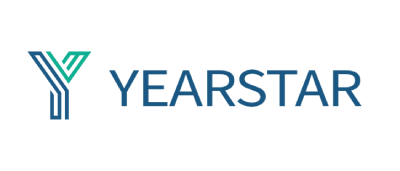In the ever-evolving landscape of healthcare, ensuring patient mobility while maintaining safety and dignity is a top priority. Transfer boards have emerged as a simple yet highly effective tool to achieve these goals. This article explores how transfer boards enhance patient mobility in healthcare settings, their benefits, and their practical applications across various care environments.
1. What Are Transfer Boards?
Transfer boards are flat, sturdy devices designed to bridge the gap between two surfaces—such as a bed and a wheelchair, or a chair and a stretcher—allowing patients to slide across with minimal effort. Made from materials like wood, plastic, or composite materials, they are lightweight, portable, and often feature smooth surfaces to reduce friction during transfers.
2. How Transfer Boards Work: Simplifying Patient Movement
The functionality of transfer boards relies on their straightforward design and ease of use:
- Bridging Gaps: The board is placed between two surfaces, creating a stable pathway for the patient to slide across.
- Reduced Friction: Smooth surfaces and optional low-friction coatings allow patients to move with less resistance.
- Assisted or Independent Transfers: Depending on the patient’s ability, caregivers can assist with the transfer, or patients with sufficient upper body strength can move themselves.
- Controlled Movement: The board provides a secure platform, ensuring the transfer is steady and safe.
3. Benefits of Transfer Boards in Healthcare
Transfer boards offer a range of advantages that improve patient care and caregiver efficiency:
- Improved Patient Mobility:
- Enhanced Independence: Patients with partial mobility can perform transfers with minimal assistance, fostering autonomy and confidence.
- Reduced Risk of Injury: By providing a stable surface, transfer boards lower the chances of falls or awkward movements.
- Comfort and Dignity: Patients experience smoother, less invasive transfers, preserving their comfort and self-respect.
- Caregiver Support:
- Less Physical Strain: Caregivers exert less effort compared to manual lifting, reducing the risk of back injuries and fatigue.
- Simplified Process: Transfers become quicker and more straightforward, requiring fewer staff members in some cases.
- Safer Work Environment: Lower physical demands contribute to fewer workplace injuries and improved staff well-being.
- Cost-Effective Solution:
- Affordable Technology: Transfer boards are relatively inexpensive compared to advanced lifting equipment.
- Durability: Made to withstand repeated use, they offer long-term value with minimal maintenance.
4. Applications of Transfer Boards in Healthcare Settings
Transfer boards are versatile tools used across diverse healthcare environments:
- Hospitals: Facilitate transfers between beds, stretchers, and diagnostic equipment in busy wards or emergency departments.
- Rehabilitation Centers: Support patients recovering from surgery or injury, aiding in physical therapy and mobility exercises.
- Nursing Homes: Assist elderly residents with limited mobility during daily activities like moving from bed to chair.
- Home Healthcare: Enable safe transfers in home settings, empowering patients and reducing the burden on family caregivers.
- Outpatient Clinics: Help patients with temporary mobility challenges during appointments or procedures.
5. Choosing the Right Transfer Board
Selecting an appropriate transfer board depends on specific needs and circumstances:
- Length and Width: Ensure the board is long enough to span the gap and wide enough to support the patient comfortably.
- Weight Capacity: Verify that the board can support the patient’s weight, especially for bariatric individuals.
- Material and Surface: Opt for smooth, durable materials that are easy to clean and maintain.
- Portability: Lightweight and compact designs are ideal for frequent use or transport.
- Additional Features: Look for options like handholds, curved edges, or non-slip surfaces for added safety and ease of use.
6. Best Practices for Using Transfer Boards
To maximize the benefits of transfer boards, follow these guidelines:
- Patient Assessment: Evaluate the patient’s strength, mobility, and cognitive ability to determine if a transfer board is suitable.
- Staff Training: Educate caregivers on proper positioning, sliding techniques, and safety precautions.
- Clear Communication: Explain the process to the patient to reduce anxiety and ensure cooperation.
- Safety Checks: Inspect the board for damage and ensure it’s securely placed before each use.
- Team Coordination: For dependent patients, coordinate with additional staff to assist as needed.
7. Conclusion: Empowering Mobility with Transfer Boards
Transfer boards are a practical and impactful solution for improving patient mobility in healthcare settings. By enhancing independence, reducing caregiver strain, and promoting safety, they contribute to better outcomes for both patients and staff. As healthcare continues to prioritize patient-centered care, transfer boards stand out as an accessible, efficient tool that bridges the gap—literally and figuratively—in modern mobility challenges.

